Prospecting & Detecting
Prospecting With a Detector: Lessons Learned
November 2012 by Fred Mason
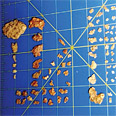 That is the course and intention for this article—to wander through some of the lessons I have learned in my thirty-two years of metal detecting and prospecting.
That is the course and intention for this article—to wander through some of the lessons I have learned in my thirty-two years of metal detecting and prospecting.
Detecting Basics: Lose the Bad Habits Not the Gold
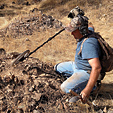 I will make the assumption that when any of you take a detector in your hand and head out prospecting for gold you are probably anticipating finding some gold. That’s the general idea, right?
I will make the assumption that when any of you take a detector in your hand and head out prospecting for gold you are probably anticipating finding some gold. That’s the general idea, right?
Hard Rock 101: Breaking Rock—Part I
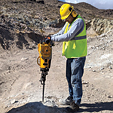 What do you do when you’ve located a promising deposit of gold or gemstones, but it’s trapped in solid rock?
What do you do when you’ve located a promising deposit of gold or gemstones, but it’s trapped in solid rock?
Goal Setting and Rock Tossing
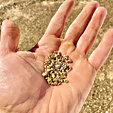 Day three was a copy of day two. I started real low in the long wash to see if I could prove how far down the gold had made it.
Day three was a copy of day two. I started real low in the long wash to see if I could prove how far down the gold had made it.
Excavator Testing Wet Placer Ground
The excavator or backhoe has become the tool of choice for testing placer ground. These machines are the best way to explore and sample a placer deposit if the ground is not too wet or frozen and bedrock is not beyond the reach of the machine.
To Foam or Not to Foam
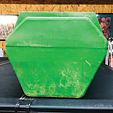 George was considering filling his dredge floats with closed-cell foam, ensuring that there would be no area available within each float for flooding.
George was considering filling his dredge floats with closed-cell foam, ensuring that there would be no area available within each float for flooding.
Study Confirms Mercury Levels Safe in California's Gold Country
While the Water Board documented the selenium levels in fish and noted they exceed the levels of mercury, they have yet to acknowledge the numerous scientific studies that show selenium effectively neutralizes the effects of mercury.
Endurance Is Golden
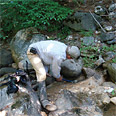 Feeling through the mud, I felt the weight and shape of what could only be gold. Throwing my hand in the water revealed a sixteen-gram nugget oozing with character.
Feeling through the mud, I felt the weight and shape of what could only be gold. Throwing my hand in the water revealed a sixteen-gram nugget oozing with character.
Subscription Required:
The Bawl Mill
• Ask the Experts
• Ask the Experts
• Ask the Experts
• Ask the Experts
• The Portable XRF Gun
• Gold Dredging on Oregon's South Umpqua
• The Struggle to Reopen Alaska's Largest Gold Mine
• The Rush to Treasure Hill
• Tips on Crevicing for Gold
• Using Google Earth and Other Maps
• Proper Assaying of Placer Samples
• Mining, Health Care & Taxes
• Melman on Gold & Silver
• Mining Stock Quotes and Mineral & Metal Prices







